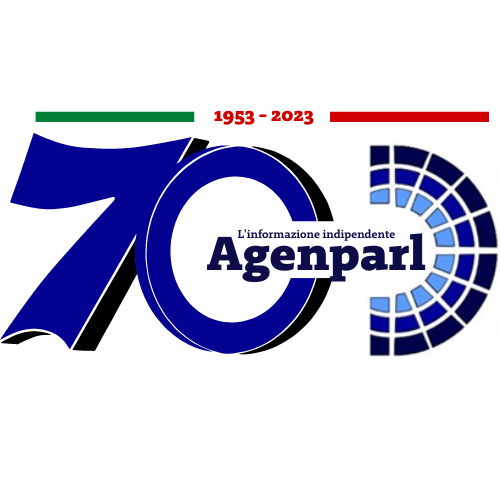 (AGENPARL) - Roma, 5 Giugno 2023
(AGENPARL) - Roma, 5 Giugno 2023(AGENPARL) – lun 05 giugno 2023 June 05, 2023
RELEASE 23-063
*NASA Selects Small Business, Research Teams for Tech Development*
iss058e005282orig.jpg
A portion of the International Space Station's solar arrays caps this
nighttime view of Earth with aurora as the orbital complex orbited 258 miles
above Ukraine and Russia.
*/Credits: NASA/*
NASA will award funding to more than 200 small business teams to develop new
technologies designed to protect the health of astronauts, lower risk of
collision damage to spacecraft, and more. The new awards from NASA’s Small
Business Innovation Research (SBIR) and Small Business Technology Transfer
(STTR) program invests in a diverse portfolio of American small businesses
and research institutions to support NASA’s future missions.
NASA selected 300 proposals from 249 small businesses and 39 research
institutions – including eight Minority Serving Institutions (MSIs) – for
first-round funding. Each proposal team will receive $150,000 to establish
the merit and feasibility of their innovations, for a total agency investment
of $45 million. Phase I SBIR contracts are awarded to small businesses and
last for six months, while Phase I STTR contracts are awarded to small
businesses in partnership with a research institution and last for 13 months.
The full lists of this year’s SBIR awardees [1] and STTR awardees [2] are
available online.
“NASA has a key role to play in growing the aerospace ecosystem in our
country,” said Jenn Gustetic, director of early stage innovation and
partnerships for Space Technology Mission Directorate (STMD) at the
agency’s headquarters in Washington. “Through these early-stage small
business awards, we are inviting more innovators into this growing arena and
helping them mature their technologies for not only NASA’s use, but for
commercial impact.”
About 30% of the companies selected are first-time NASA SBIR/STTR recipients,
including nou Systems, Inc. [3], a women-owned small business based in
Huntsville, Alabama. The first-time NASA SBIR recipient was selected to
further develop their technology that will help in microbial monitoring of
spacecraft environments. The closed and unique environment on spacecraft make
microbial monitoring of utmost importance to astronauts’ health.
Specifically, nou Systems has proposed a novel approach to automate the DNA
monitoring of microbes, helping quickly identify those which might pose a
threat to astronauts. This technology could first find use as part of the
International Space Station’s biological testing equipment.
“We are proud to work alongside the small businesses and research
institutions in need of government investment,” said Gynelle Steele, deputy
program executive for NASA's SBIR/STTR program at NASA Headquarters. “This
program enables NASA to nurture pioneering ideas from a diversity of
innovators across the country that may not attract the initial private
industry funding needed to thrive.”
More than a quarter of the selected companies are women-owned, veteran-owned,
disadvantaged, and/or HUBzone [4] small businesses. For example,
veteran-owned HyBird Space Systems LLC [5], a two-person company based in
Spanaway, Washington, was selected for an SBIR award to help NASA in its
efforts to mitigate the potential risk of damage to its spaceflight programs
from orbital debris – humanmade objects in Earth orbit that no longer serve
a useful purpose. Their proposed retrobraking propulsion system, named RT-5X,
will focus initially on deorbit of spacecraft in low Earth orbit. The company
hopes their technology becomes a low-cost, preventative debris solution that
also provides controlled re-entry, and may be beneficial for other small
satellite developers.
Four STTR awardees previously received NASA M-STTR planning grants – now
part of Minority University Research and Education Project Partnership Annual
Notification (MPLAN [6]) – which were created to incentivize partnerships
between MSIs and small businesses.
"These grants provide funding and mentorship to stimulate creative
engagements between MSIs and small businesses and help spur mutually
beneficial relationships that result in technologies supporting NASA mission
and commercial market development," said Steele. "We are pleased that MPLAN
continues to help increase the number of skilled research teams that are
better prepared to take their ideas from lab to market and strengthen the
STTR program through their contribution."
The new SBIR/STTR investments will be spread out over 38 states and
Washington. This includes a cross country STTR Phase I team with 2pi
Microwave Inc [7]., based in Milpitas, California, partnering with the
University of Maryland in College Park, Maryland. Together, they will begin
to develop a lightweight, compact, and high-performance lidar – a system
like radar, but using light waves instead of radio waves, making it faster
and more efficient for many applications spanning science missions, space
exploration systems, and aeronautics. The team's lidar system would have
unprecedented ultrawide field-of-view, low loss, and a high frame rate.
NASA selected Phase I proposals to receive funding by judging their technical
merit and commercial potential. Based on their progress during Phase I,
companies may submit proposals for $850,000 in Phase II funding to develop a
prototype, as well as subsequent SBIR/STTR Post Phase II opportunities [8].
The NASA SBIR/STTR program is part of STMD and is managed by NASA’s Ames
Research Center in California's Silicon Valley.
To learn more about NASA's SBIR/STTR program and apply to future
opportunities, visit:
*https://sbir.nasa.gov/* [9]
-end-
*Press Contacts*
Sarah Frazier
Headquarters, Washington
202-853-7191
Tiffany Blake
Ames Research Center, Silicon Valley, Calif.
650-316-0153
NASA news releases and other information are available automatically by
text in the body is required).
To unsubscribe from the list, send an e-mail message
is required).
[1] https://sbir.nasa.gov/award_firm_list/selection_nid/97778
[2] https://sbir.nasa.gov/award_firm_list/selection_nid/97779
[3] https://sbir.nasa.gov/SBIR/abstracts/23/sbir/phase1/SBIR-23-1-H3.10-2121.html
[5] https://sbir.nasa.gov/SBIR/abstracts/23/sbir/phase1/SBIR-23-1-Z8.13-2038.html
[6] https://www.nasa.gov/nasa-mplan-2023
[7] https://sbir.nasa.gov/SBIR/abstracts/23/sttr/phase1/STTR-23-1-T8.07-1327.html
[8] https://sbir.nasa.gov/content/post-phase-ii-initiatives
[9] https://sbir.nasa.gov/
